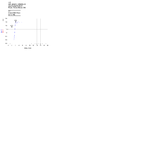msdarvishi
Full Member level 4
Dear all,
I simulated a circuit with ADS and I am trying to measure the time delay between input and output of my circuit, but I failed !!
I used Eq wizard and defined the equation as "y=delay_path(in,out)" in the results window, but upon donig simulation, it does not show any value !!
Could anybody let me know how can I measure this delay?
Thanks and Regards,
I simulated a circuit with ADS and I am trying to measure the time delay between input and output of my circuit, but I failed !!
I used Eq wizard and defined the equation as "y=delay_path(in,out)" in the results window, but upon donig simulation, it does not show any value !!
Could anybody let me know how can I measure this delay?
Thanks and Regards,

